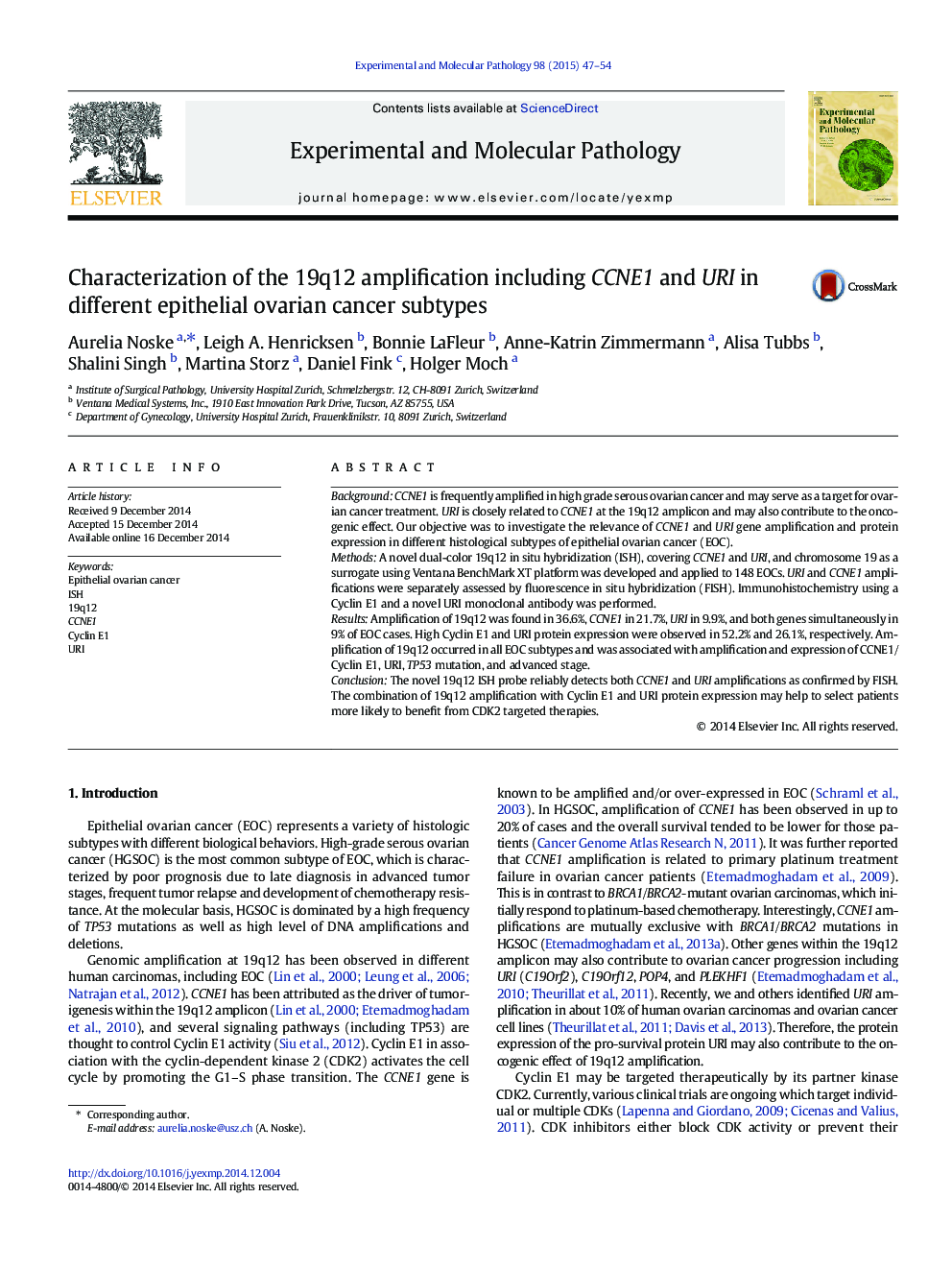| Article ID | Journal | Published Year | Pages | File Type |
|---|---|---|---|---|
| 2775050 | Experimental and Molecular Pathology | 2015 | 8 Pages |
BackgroundCCNE1 is frequently amplified in high grade serous ovarian cancer and may serve as a target for ovarian cancer treatment. URI is closely related to CCNE1 at the 19q12 amplicon and may also contribute to the oncogenic effect. Our objective was to investigate the relevance of CCNE1 and URI gene amplification and protein expression in different histological subtypes of epithelial ovarian cancer (EOC).MethodsA novel dual-color 19q12 in situ hybridization (ISH), covering CCNE1 and URI, and chromosome 19 as a surrogate using Ventana BenchMark XT platform was developed and applied to 148 EOCs. URI and CCNE1 amplifications were separately assessed by fluorescence in situ hybridization (FISH). Immunohistochemistry using a Cyclin E1 and a novel URI monoclonal antibody was performed.ResultsAmplification of 19q12 was found in 36.6%, CCNE1 in 21.7%, URI in 9.9%, and both genes simultaneously in 9% of EOC cases. High Cyclin E1 and URI protein expression were observed in 52.2% and 26.1%, respectively. Amplification of 19q12 occurred in all EOC subtypes and was associated with amplification and expression of CCNE1/Cyclin E1, URI, TP53 mutation, and advanced stage.ConclusionThe novel 19q12 ISH probe reliably detects both CCNE1 and URI amplifications as confirmed by FISH. The combination of 19q12 amplification with Cyclin E1 and URI protein expression may help to select patients more likely to benefit from CDK2 targeted therapies.
